Hellish Walking Trail
 The walking trail marked with the red colour with an intriguing name „Hellish Trail” amounts to nearly 250 km and runs through 9 communes in 3 counties: of Końskie, Skarżysko-Kamienna and Opoczno.
The walking trail marked with the red colour with an intriguing name „Hellish Trail” amounts to nearly 250 km and runs through 9 communes in 3 counties: of Końskie, Skarżysko-Kamienna and Opoczno.
It goes from Piekło („Hell” in English) to Niebo („Heaven” in English) and connects these two villages located amidst pine forests south of Końskie. Even though the two places lie only 2 km away from each other, the entire trail is 250 km long. Characteristic names and legends connected with given localities made the supernatural powers - hellish and christian ones – the main theme of the whole route. On the trail there are well-equipped relaxation places with a gazebo, bonfire spot, roofed benches and dustbins.
The trail was created on the initiative of the Local Activity Group – At the Springs (in Polish: Lokalna Grupa Działania – U Źródeł) in Modliszewice. Following the route we have a chance to visit interesting places, such as:
 Hell (village, in Polish Piekło) – the trail beginning, a locality hidden amidst forests, in whose neighbourhood there is a nature monument „Hell (rocks) by Gatniki” consisting of a group of jurassic sandstone rocks, picturesquely shaped by erosion, reaching up to 5 m high and stretching along around 100 m.
Hell (village, in Polish Piekło) – the trail beginning, a locality hidden amidst forests, in whose neighbourhood there is a nature monument „Hell (rocks) by Gatniki” consisting of a group of jurassic sandstone rocks, picturesquely shaped by erosion, reaching up to 5 m high and stretching along around 100 m.
Czarna (village) – where we will find the Sanctuary of the (Rearing) Mother of God to which pilgrims travel every year at the beginning of September.
Hell Rocks by Niekłań - the inanimate nature reserve is another example proving that the region abounds in names containing such word as hell or devil. Located in the Stąporków commune, the re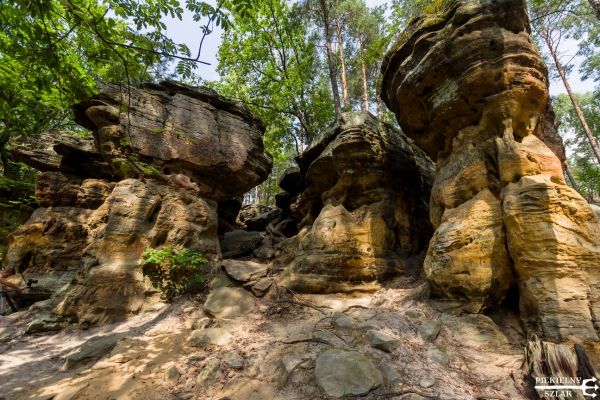 serve was established in 1959 to protect interesting sandstone formations caused by wind erosion. Scattered over a line, one-kilometer-long, they resemble mushrooms, ledges, chimneys, pulpits, and the like. Their height reaches 8 meters in some places. The rock formations are found close to the blue hiking tourist trail (Kuźniaki – Sielpia – Końskie – Pogorzałe) or to the black one leading from Wólka Plebańska (7 km). The rocks provided shelter for the insurgents of the January Uprising and WWII partisans. Whereas legends remind us of devils that are said to have had their home there.
serve was established in 1959 to protect interesting sandstone formations caused by wind erosion. Scattered over a line, one-kilometer-long, they resemble mushrooms, ledges, chimneys, pulpits, and the like. Their height reaches 8 meters in some places. The rock formations are found close to the blue hiking tourist trail (Kuźniaki – Sielpia – Końskie – Pogorzałe) or to the black one leading from Wólka Plebańska (7 km). The rocks provided shelter for the insurgents of the January Uprising and WWII partisans. Whereas legends remind us of devils that are said to have had their home there.
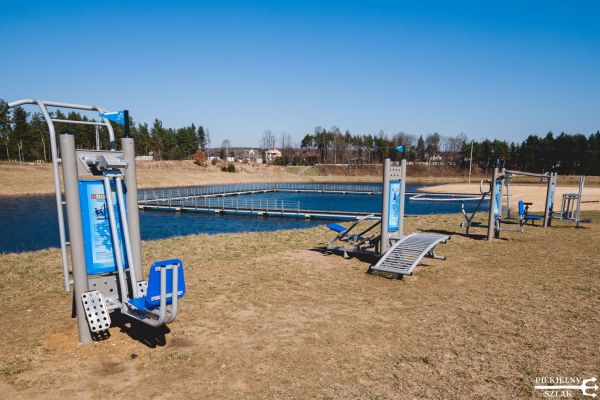
Bliżyn reservoir – created on the Kamienna river, welcomes all wanting to have a good rest, be it active or passive, by offering a beach with a paddling pool for kids, playground for children, volleyball court, gym and a gazebo with a barbecue.
Hellish Gate Nature Re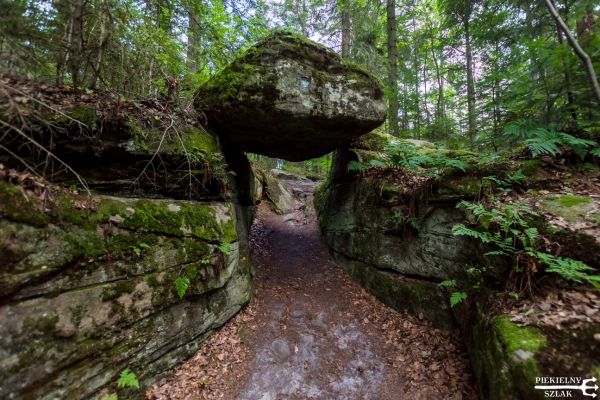 serve – a unique nature monument, this peculiar gate was shaped either by nature or by means of hellish powers! Every visitor takes a photo depicting them as they are lifting an enormous boulder – it’s the best souvenir from the trail.
serve – a unique nature monument, this peculiar gate was shaped either by nature or by means of hellish powers! Every visitor takes a photo depicting them as they are lifting an enormous boulder – it’s the best souvenir from the trail.
Dalejów Hell Nature Reserve – a unique rock maize, blocks of triassic sandstone create 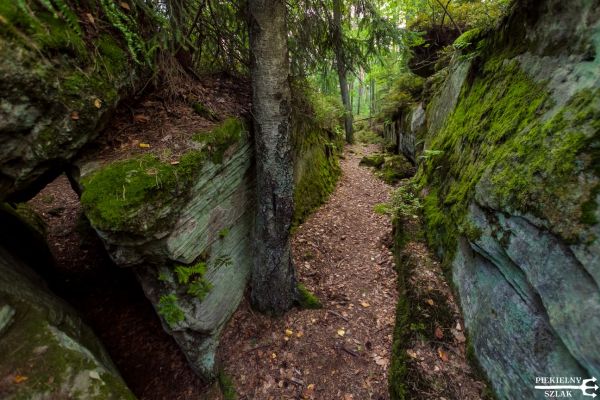 walls, thresholds and cliffs reaching up to 2-2,5 m tall.
walls, thresholds and cliffs reaching up to 2-2,5 m tall.
Świnia Góra Nature Reserve– a magical place covered by woods which delights to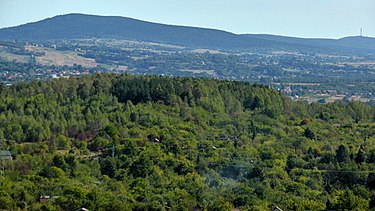 urists by its biodiversity and virgin nature.
urists by its biodiversity and virgin nature.
 Krasna – name of the village, river, nature reserve and Nature 2000 area. A picturesque river valley which is a place of water birds and for this reason was decided to be protected in various forms. One of its most known protected area is „Upper Krasna Valley Nature Reserve”.
Krasna – name of the village, river, nature reserve and Nature 2000 area. A picturesque river valley which is a place of water birds and for this reason was decided to be protected in various forms. One of its most known protected area is „Upper Krasna Valley Nature Reserve”.
Cisownik – the village which hosted, during the WWII, the soldiers of major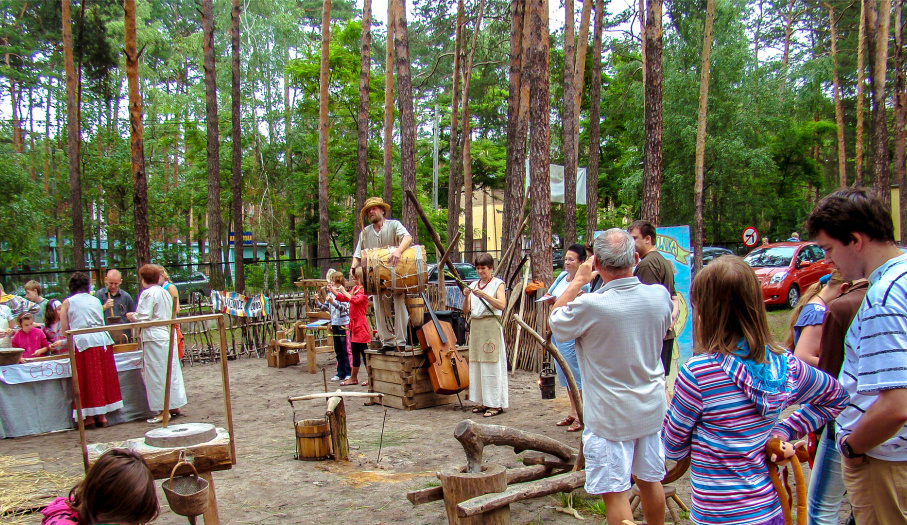 Henryk Dobrzański, aka Hubal. Today it smells of fresh baked rural bread and houses a historic homestead of the Sosnowski family, the so-called Cisownik skansen where we can experience by ourselves what life looked like in the countryside.
Henryk Dobrzański, aka Hubal. Today it smells of fresh baked rural bread and houses a historic homestead of the Sosnowski family, the so-called Cisownik skansen where we can experience by ourselves what life looked like in the countryside.
Sielpia – a very well-developed holiday resort of the Końskie region, located 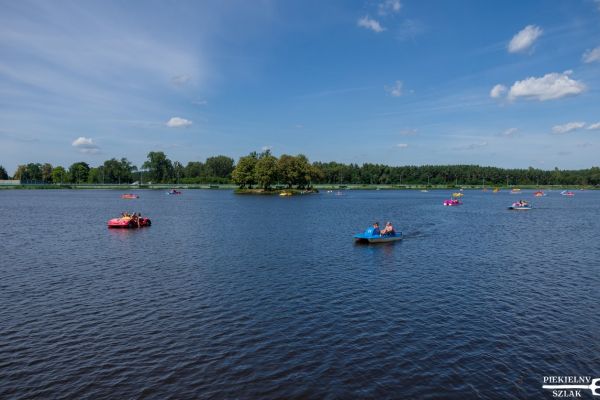 amidst forests with many lodging places, reservoir on the Czarna river where every year there are the following facilities functioning: a gauarded lido, rental companies providing water sports equipment and an adventure park.
amidst forests with many lodging places, reservoir on the Czarna river where every year there are the following facilities functioning: a gauarded lido, rental companies providing water sports equipment and an adventure park.
 Hell (rocks) by Szkucin – the reserve of inanimate nature, encompassing within its area jurassic rock conglomerates, with interesting shapes, presented picteresquely on the edge of the forest.
Hell (rocks) by Szkucin – the reserve of inanimate nature, encompassing within its area jurassic rock conglomerates, with interesting shapes, presented picteresquely on the edge of the forest.
 Lipa – a village with a beautiful wooden little church of St. Lawrence.
Lipa – a village with a beautiful wooden little church of St. Lawrence.
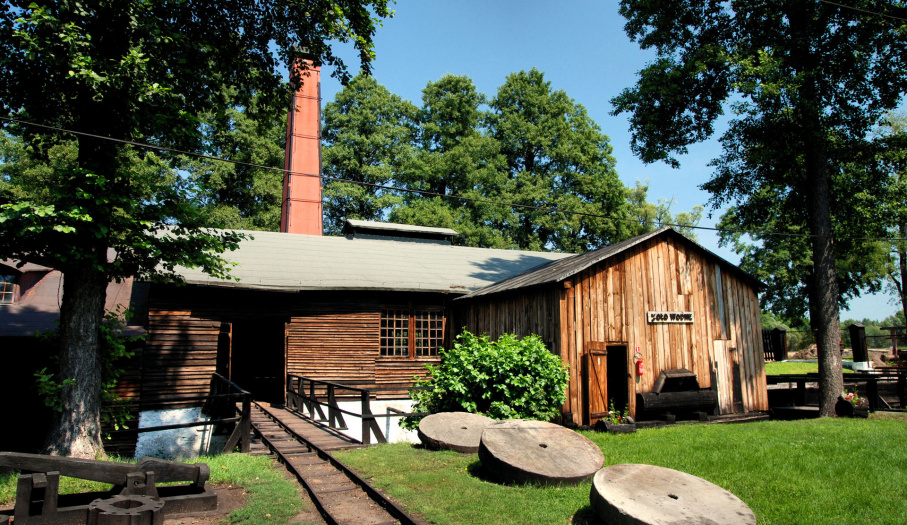 Maleniec – a village which is a place of one of the most attractive technical monuments in the region. The Historical Metallurgical Plant in Maleniec used to be famous for the rolling mill, the nail plant and the spade manufacture plant dating from 1839. Currently, this fantastic museum houses the hydrotechnical system and machinery park, thanks to which we can fathom out the mysteries of the usage of kinetic Energy of falling water.
Maleniec – a village which is a place of one of the most attractive technical monuments in the region. The Historical Metallurgical Plant in Maleniec used to be famous for the rolling mill, the nail plant and the spade manufacture plant dating from 1839. Currently, this fantastic museum houses the hydrotechnical system and machinery park, thanks to which we can fathom out the mysteries of the usage of kinetic Energy of falling water.
Devil’s Mountain Nature Reserve – forest and landscape reserve embracing a hill, made 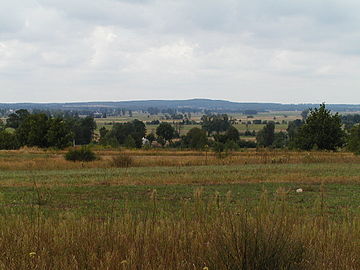 up of jurassic sandstone, overgrown with woods. A national remembrance site dating from the January Uprising and WWII times.
up of jurassic sandstone, overgrown with woods. A national remembrance site dating from the January Uprising and WWII times.
 Africa (village, in Polish Afryka) – yes, yes … Africa, but not the one too wild … A vilage of this name is situated 15 km away from Paradyż.
Africa (village, in Polish Afryka) – yes, yes … Africa, but not the one too wild … A vilage of this name is situated 15 km away from Paradyż.
Paradyż – a village famous for a baroque monastery complex with a church of the Transfiguration of the Lord.
Żarnów – a locality founded in the Middle Ages, with a spectacular church of St. Nicolaus whose oldest part was built in the romanesque style. Next to the church we will see the traces of the XI century gord.
Miedzna Murowana – a village known for a 185-ha reservoir created on the Wąglanka river. A great place for angling and sunbathing.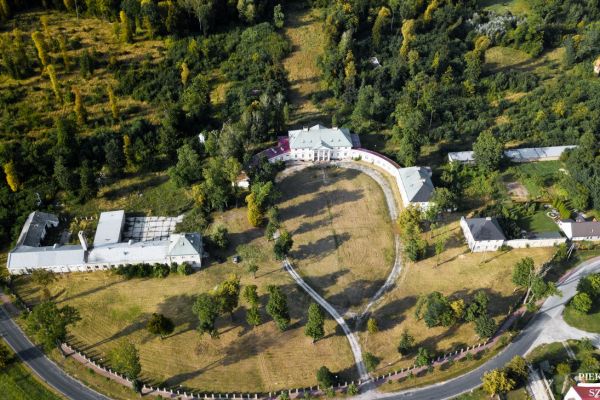
Białaczów – the most important monument here is a classicistic palace complex built in the XVIII c. on the initiative of Stanisław Małachowski – a Końskie resident, marshal of the Great Sejm which enacted the Constitution of 3 May. For the time being, the facility is closed for visitors.
Kamienna Wola – a village famous for an enormous boulder called „Devil’s Rock” – a granite glacial erratic block left in the distant past by a continental glacier (or a devil’s servant!). It has around 16 m in girth and reaches up to 4 m in height. In the trail proximkity there is a place to have a rest with tables and roofed shelters.
Stara Kuźnica – a small village situated on the Młynkowska river, with a one and only water-powered forge in Poland, presereved in its original shape from XIX c.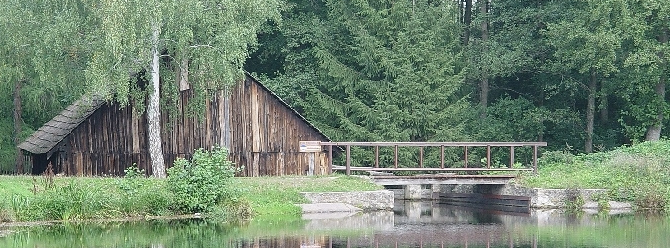
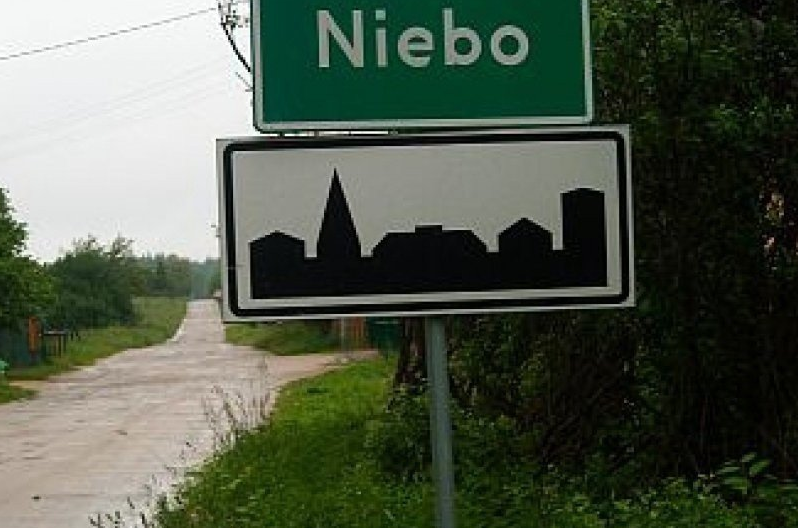 Heaven (village, in Polish Niebo) – the trail finish line, at the very end of the village there’s a place to relax with tables and a bonfire spot.
Heaven (village, in Polish Niebo) – the trail finish line, at the very end of the village there’s a place to relax with tables and a bonfire spot.
The official website of the Hellish Trail (available in Polish only).




